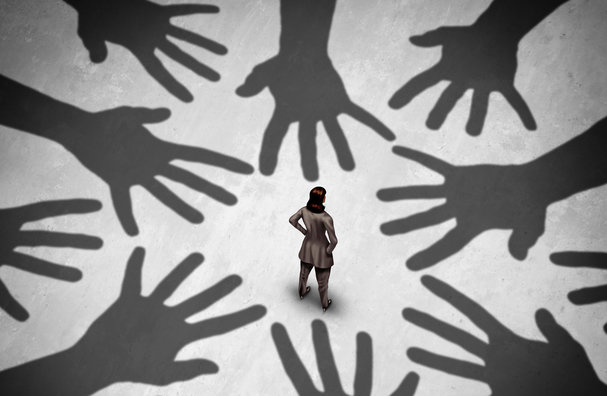
Credit: Brain Light/Alamy
Why sexual harassment needs tougher punishment
Grant and funding withdrawals should be considered, say researchers.
3 December 2019

Brain Light/Alamy
Funding agencies should cut off grant money to researchers who have been found guilty of sexual misconduct.
That’s one of the recommendations from a panel of 21 US-based scientists calling for stronger policies to address sexual harassment and gender bias in science.
Their statement, published in Science, is in response to a 2018 US National Academy of Sciences, Engineering and Medicine (NASEM) report, which advised that sexual misconduct should have consequences as severe as those associated with research misconduct.
“We think that it should be punished severely,” says Jason Sheltzer, a cancer biologist at the Cold Spring Harbor Laboratory in New York, who coauthored the paper in Science.
Sheltzer and his colleagues say that researchers and their institutions should be required to disclose reports of sexual harassment to funding agencies, as is required for other forms of misconduct.
They argue that if a researcher is found guilty, the funding agency should withdraw their grant and report the findings on a public database.
The paper also urges institutions and funding agencies to establish offices for handling sexual harassment claims, similar to the US Government’s Office of Research Integrity of the Department of Health and Human Services.
These offices should have clear reporting systems and well-defined procedures for handling sexual harassment cases, to inform institutions on how best to carry out investigations.
Disturbingly common
According to NASEM, 58% of women in academia in the US have dealt with unwanted sexual attention or advances during their careers, which is the highest rate of any sector except the military.
A survey conducted by The Pennsylvania State University, mentioned in the 2018 NASEM report, found that 43% of graduate students and 33% of undergraduates at the institution have experienced sexual harassment.
While sexual misconduct is disturbingly common in science, measures for addressing it often fall short.
For example, in one Australian survey of nearly 300 science professionals released in early 2019, almost one-third of the respondents said that their workplace’s policies regarding sexual harassment were ineffective and their procedures for handling reported incidents were inadequate.
This can prompt some women to quit research altogether, and the loss of talent can undermine productivity and efforts to improve gender equality in the scientific workforce, the Science authors say.
Sheltzer says that harassers can target women at any stage of their career, whether they are a PhD student or a faculty member. “Even some of the most experienced and successful female scientists are still faced with some of these problems.”
Beverly Emerson, a molecular biologist at Oregon Health and Science University’s Knight Cancer Institute, is one such scientist. In November 2018, Emerson’s lawsuit against the Salk Institute for Biological Studies in California for gender discrimination was settled on undisclosed terms.
Emerson and several other women were allegedly sexually harassed by Salk Cancer biologist Inder Verma. Verma, who repeatedly denied the allegations, was suspended then resigned during Salk Institute’s investigations of the allegations.
While Emerson supports the recommendations outlined in the Science article, she adds that institutions should also pay the price if they fail to take steps, such as suspending or terminating offenders, to prevent harassment.
“Too often, bad behaviour by individuals deemed too important to fail is tolerated by organizations,” says Emerson, who did not contribute to the paper, by email. “An effective catalyst to ensure equitable working conditions within an organization is imposing a substantial penalty for wrongdoing.”
The paper calls for strategies that protect the careers of victims and whistleblowers, such as making ‘bridge funds’ available to help researchers change labs or return to work after leaving academia due to harassment.
Stamping out bias
BethAnn McLaughlin, neuroscientist and founder of MeTooStem, an advocacy group for victims of sexual harassment, points out that there are “very real consequences for reporting sexual misconduct”.
“Until we centre whistleblowers as community champions, we will struggle,” says McLaughlin, a co-author on the paper. “If we don't make this a survivable crime to report, we simply can't expect more people to come forward.”
Sheltzer adds that the academic hierarchy can make it difficult for women to speak up about predatory behavior. “Academic power can be wielded and brought to bear against people who are causing ‘trouble’ over sexual harassment,” he says.
“They may vote against someone’s tenure case, deny a raise, or refuse to give a letter of recommendation.”
The researchers recommend that institutions and funding agencies address the biases that contribute to the gender imbalance in positions of power and influence in science, for example, by sharing salary and grant funding data with new hires and advisory committees, establishing family-friendly policies that foster a work-life balance, and strengthening mentorship programs to advance women’s careers.
“Harassment and misconduct have no place in science,” says Wafa El-Adhami, executive director of Science in Australia Gender Equity (SAGE). “Achieving gender equity is fundamental to ending sexual harassment.”
